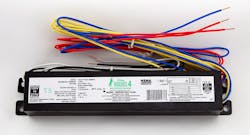Electrical Troubleshooting Quiz — Jan. 2, 2019
The lighting ballasts frequently fail in a high-revenue portion of the plant. Maintenance is quick to respond, and because quick disconnects were installed at all luminaires, the repairs are quick.
However, there are still process interruptions and many complaints from production workers. You’ve just been promoted to plant engineer. Your predecessor took a lot of heat over this problem, and found a job elsewhere.
Your predecessor did one last project before leaving. After noticing the lack of transient voltage surge suppression (TVSS), he hired a contractor to install a power monitor for a few days to look for voltage spikes. Those were discovered and the TVSS installed, yet the problem persists. What’s your next move?
Lighting ballasts can fail for reasons other than voltage spikes. If, for example, large motors generate voltage spikes by starting across the line, they also generate other power quality problems that TVSS won’t protect against.
Complete your predecessor’s foray into power quality issues with a full power analysis. You could solve multiple power quality problems by installing a soft starter or variable frequency drive (VFD) on each motor; consider the feasibility of doing that.
In addition, closely examine the equipment bonding. Does all the equipment on the lighting circuit have a reliable connection to the equipment grounding conductor (EGC) so there’s equipotential? You may find that’s not so; for example, locknuts on luminaires are being used as part of the bonding path.
About the Author

Mark Lamendola
Mark is an expert in maintenance management, having racked up an impressive track record during his time working in the field. He also has extensive knowledge of, and practical expertise with, the National Electrical Code (NEC). Through his consulting business, he provides articles and training materials on electrical topics, specializing in making difficult subjects easy to understand and focusing on the practical aspects of electrical work.
Prior to starting his own business, Mark served as the Technical Editor on EC&M for six years, worked three years in nuclear maintenance, six years as a contract project engineer/project manager, three years as a systems engineer, and three years in plant maintenance management.
Mark earned an AAS degree from Rock Valley College, a BSEET from Columbia Pacific University, and an MBA from Lake Erie College. He’s also completed several related certifications over the years and even was formerly licensed as a Master Electrician. He is a Senior Member of the IEEE and past Chairman of the Kansas City Chapters of both the IEEE and the IEEE Computer Society. Mark also served as the program director for, a board member of, and webmaster of, the Midwest Chapter of the 7x24 Exchange. He has also held memberships with the following organizations: NETA, NFPA, International Association of Webmasters, and Institute of Certified Professional Managers.
